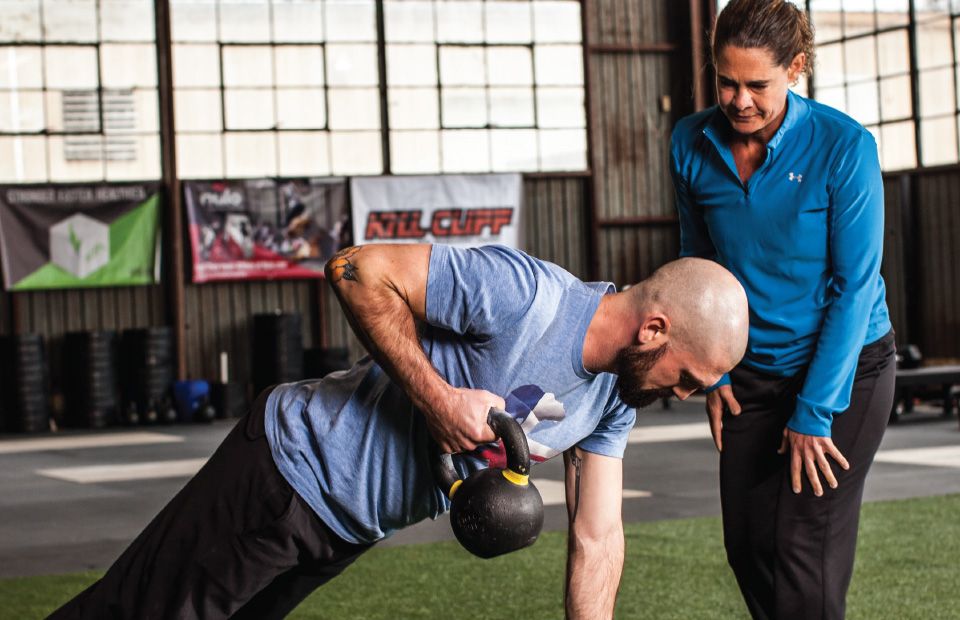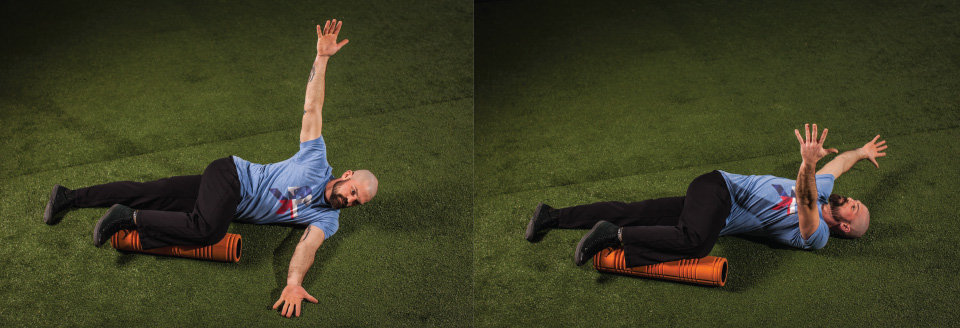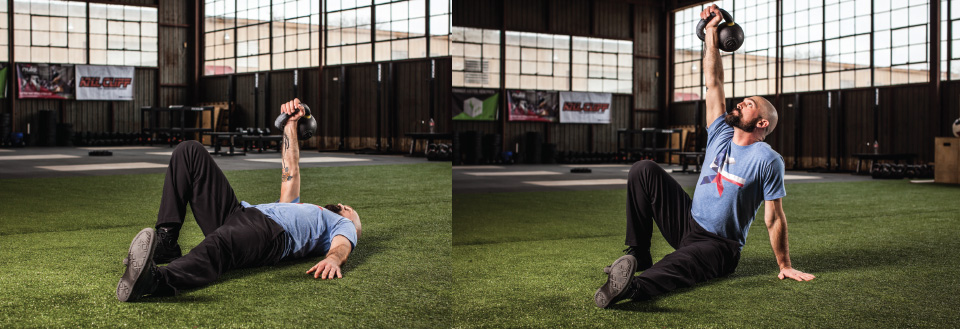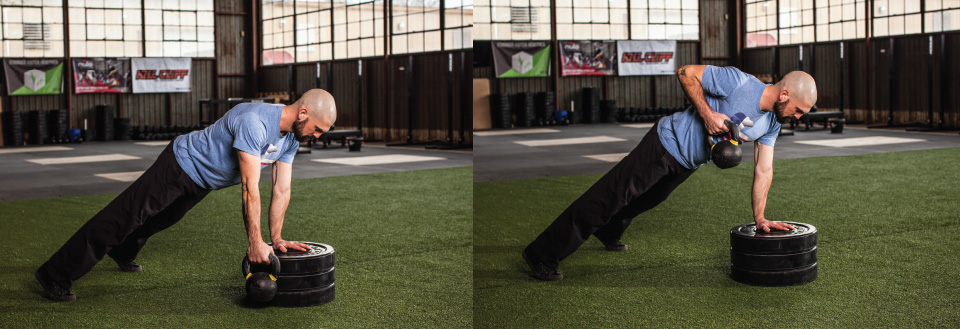Prepping Your Strength

The body learns behavior patterns throughout our lives. Early in life, we discover we have mobility in and around our joints and we explore movement to earn the stability needed to become stronger. We know we want to be strong, do more work in less time, and be able to transfer that ability into activities that mean something. The movements this month will exercise your mobility and stability and challenge your strength.
Key to building upper body strength is maintaining mobility in the thoracic spine. Through this mobility, we can attain a strong and stable connection between the trunk, the shoulder blade, and the shoulder so they work together and each do their part to create strong, healthy movements.
We’ll finish this workout by giving you a great exercise to challenge strength on one side of your body while maintaining stability on the other. Training your body to do opposing jobs on each side translates to skilled movement and better functional strength.

T-Spine Rotation with Reach
Purpose: Puts the body in position to lock the low back safely and focus on mobility in the upper back where it’s needed with rotation and a natural diagonal reach.
Movement:
Start by lying on your side with shoulders stacked, head supported so the neck is neutral with no stress on the muscles. Upper leg is flexed out in front of you to just over 90 degrees on a foam roll.
Take in a deep breath and, while you slowly breath out, turn the shoulders so that your back gets closer to the ground and reach diagonally with your arm—creating a natural line from the lower hip to the reaching shoulder to the reaching arm.
Hold for a few seconds at the point of a stretch, but never allow it to be painful.
Roll back slightly toward start position to release stretch, take in another breath, and repeat—allowing the movement to open up more.

Half Get Up
Purpose: Alternating mobility and stability in the body during a ground-based movement is great for upper body stability. This will transfer to enhanced strength in other upper body exercises.
Movement:
Start by lying on your back, leg flexed with foot grounded and the kettlebell in an extended arm position on the same side over the shoulder. The down arm and legs should be about 45 degrees off-centerline of torso.
To move under the kettlebell, initiate the movement by pressing through the heel and extending the hip, then roll up onto the opposite elbow. Wrist always stays in vertical position with the knuckles facing the sky.
Maintain space between ear and shoulder on both sides at all times.
Sit up, moving under the kettlebell by extending the elbow and placing the hand in line with the shoulder.
Always keep your eyes on the kettlebell throughout the movement.
Pause at each point of movement to establish valuable stability at each point of the exercise.
Reverse the movements with very intentional control and slow transitional movements as you lower yourself, reverse roll, and then reach the start position.
*Tip: You may practice the exercise by balancing a shoe or yoga block on your knuckles. This is safe and a great challenge!

Prone Row
Purpose: Stabilize on the post arm in a plank position while performing a row for strength on the opposite side. This takes great shoulder stability and core strength and helps develop upper body strength.
Movement:
Start in a push-up plank while slightly elevated on a stable surface such as a box or step. While maintaining shoulder parallel with the ground, hold a kettlebell in free hand.
Pull the kettlebell up by raising the elbow to the sky and maintaining a vertical alignment with the forearm. Finish the movement by reaching back with the shoulder and shoulder blade so the entire shoulder complex is involved and you reach a complete range of motion.
Make sure you press the shoulder away from your ear and keep neck aligned with torso. No dropping head or chicken necks!
Return to start position slow and controlled. Don’t let gravity do your work for you and rob you of additional strength benefits.






